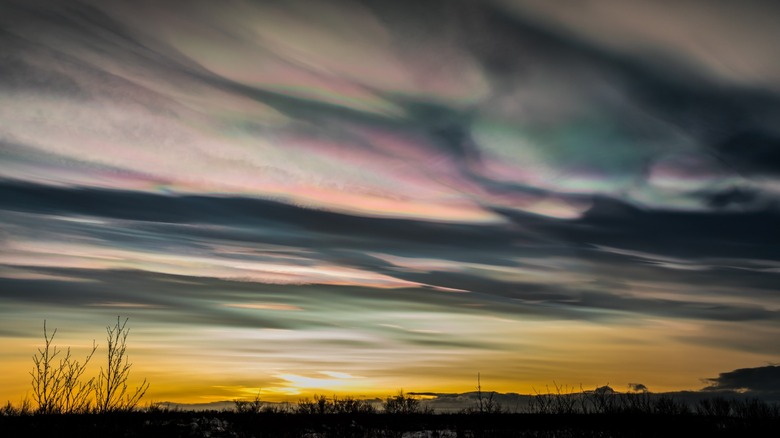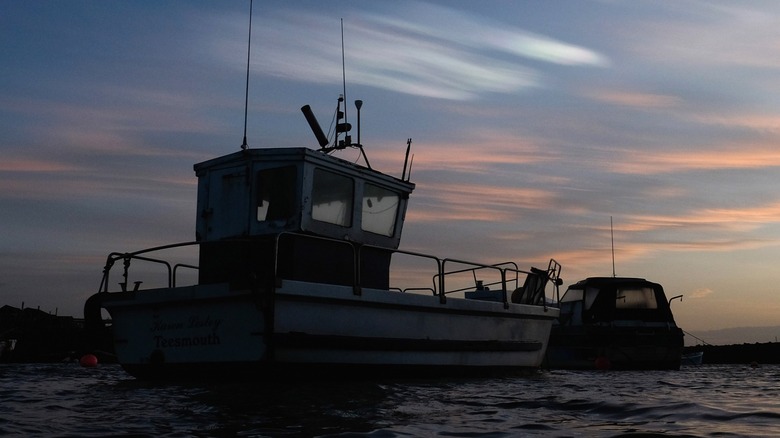Nacreous Clouds Explained: How It Happens (And Where To See Them)
At an early age, one of the first science lessons for most will probably be a lesson on the various types of clouds in the sky. However, it might surprise you to learn that cloud formations are actually fairly complex and are not limited to the cirrus, cumulus, stratus, and nimbus you may have learned about in elementary school. Indeed, while most clouds will fit under these four core categorizations, scientists use 10 different categories for basic clouds, and that doesn't even include atypical clouds that occur rarely or only in specific parts of the world.
One of these special kinds of rare clouds is known as nacreous clouds. More commonly referred to as "mother-of-pearl clouds" because of their iridescent or rainbow nature, seeing nacreous clouds is incredibly rare in most parts of the world. However, images of these clouds are pretty astounding, which may have led you to wonder what nacreous clouds are and how they are formed.
What are nacreous clouds?
Nacreous clouds are highly iridescent clouds that form in the stratosphere at extremely low temperatures of around negative 85 degrees Celsius. Scientifically, these clouds can form when temperatures in the stratosphere fall below the frost point, forming ice crystals, which generally only occur in higher latitudes. Particles that make up nacreous clouds are smaller than in other kinds of clouds, enabling them to scatter light uniquely, giving them their notable iridescent or rainbow appearance.
According to the Meteorological Office of the UK, these clouds most commonly form at 68,500 – 100,000 feet in elevation. During the day, nacreous clouds often don't look very special and can resemble a pale cirrus cloud; however, the cloud really lights up when the sun is 1-6 degrees below the horizon at sunrise and sunset.
Nacreous clouds are a type of polar stratospheric cloud and are associated with freezing and dry weather. Depending on chemical composition, ambient temperature, and elevation, scientists classify nacreous clouds into three types: la, lb, and ll.
Where to see nacreous clouds
Nacreous clouds can be viewed in several high-latitude locations during the sunrise and sunset during the winter. Locations where they occur include places like Antarctica, Scotland, Scandinavia, Alaska, Russia, and Canada. Usually, the phenomenon happens downwind from a mountain range, so identifying a location that fits this criteria may increase your chances of seeing them.
Rarely, nacreous clouds can also occur in other locations in northern Europe when the temperature in the stratosphere gets low enough. Typically, they only form in cold winters, so even in the right locations, there's a chance they may not materialize.
Ultimately, nacreous clouds are a cool phenomenon that happens in nature that most people probably won't see in person. If you're wondering about nacreous clouds' resemblance with other natural phenomena like the Northern Lights or aurora borealis, it might be interesting to know that while appearing similar, aurora borealis occurs when gas is released from the sun and collides with Earth's magnetosphere (magnetic field), which isn't related to the colorful phenomenon that forms nacreous clouds.


